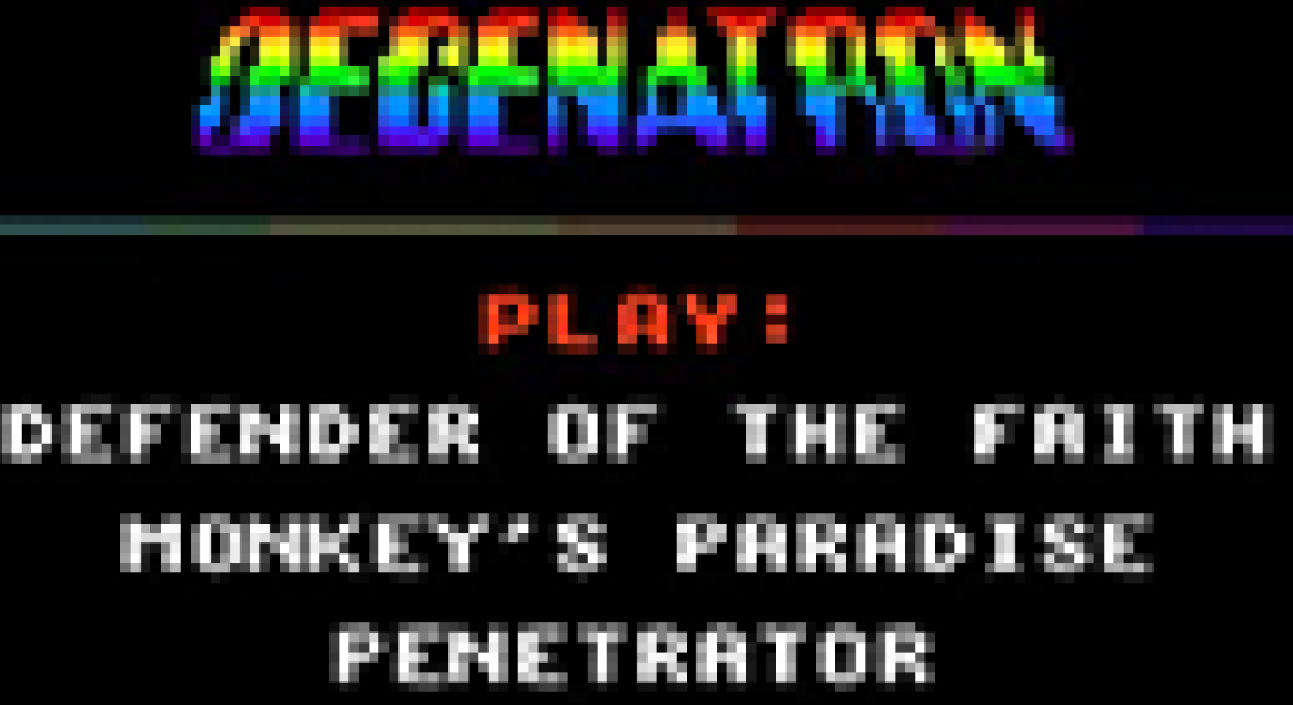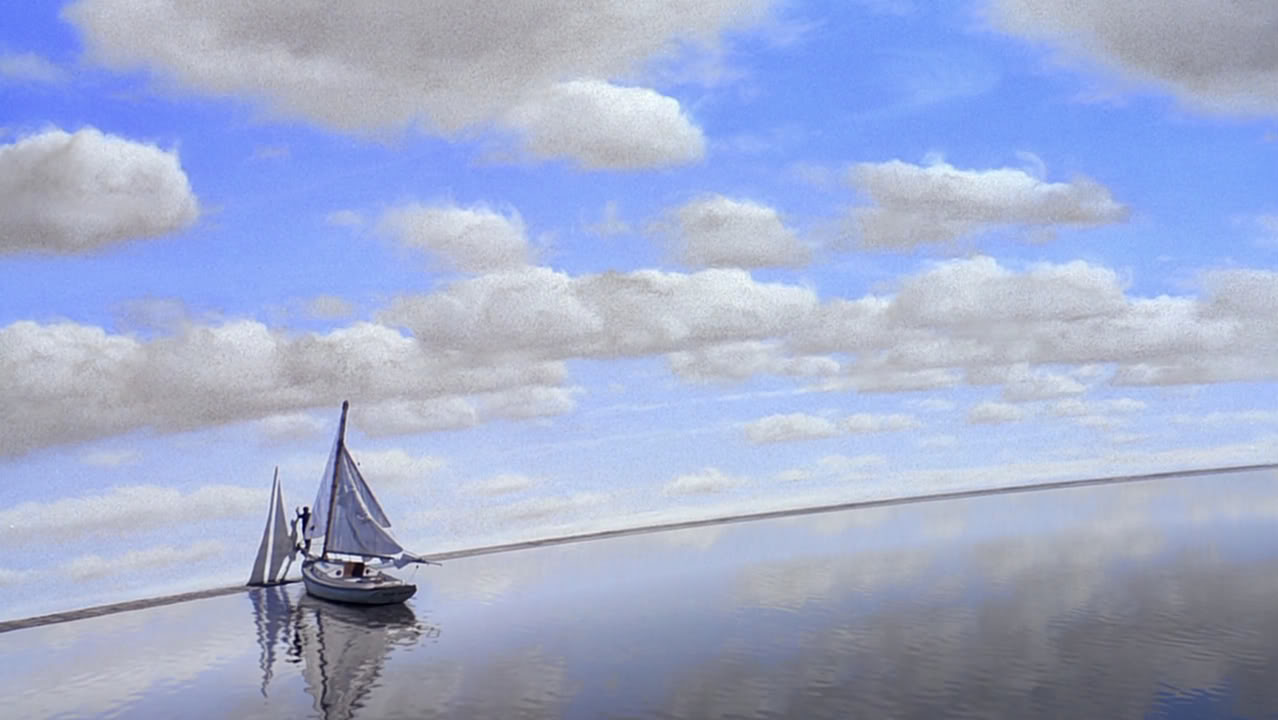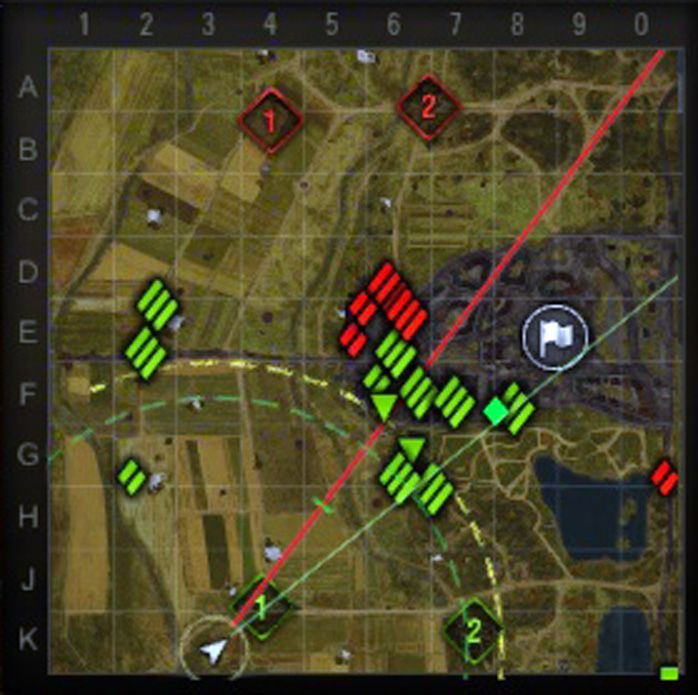damjancd
Damjan joined
+Brave procedurally generated game ecosystems, AI, Terrain, Missions. +Hard games (Not HARD like Contra, but Hard like Dwarf Fortress, STALKER: Misery Mod, Operation Flashpoint) +Easily Cooked Moderately Tasty Cheap Food +Games that incorporate genetic algorithms +Hard Sci-fi +Alvin Toffler +Transhumanism +Post-apocalypse culture +Mind-machine interfaces +Libertarianism

A minigame which is inside a bigger game, although an interesting meta, matryoshka like concept, is also a concept that is almost exclusively done by inept game developers unable to integrate the minigame inside their “large” “main” game with finesse. What I’m saying is that minigames should never be present in a serious game world, where a capable game tends to do as much as possible to integrate and immerse the player in the game world, minigames have the exact opposite effect... read the rest here : Noclipon.wordpress.com
Hi there to all the ghosts and the few people that read my moddb.com blog, I'm moving everything to
noclipon.wordpress.com

There is a new article there right now.
They are a Polish group of a few dozen people, dedicated and passionate about recreating the STALKER feeling, environment, atmosphere in real life. At the end of their project, the abbreviation Socho stands, it is the town they are all from, Sochaczew.

Judging from the pictures their Facebook page generously feeds their fans on a regular basis, the town offers excellent locations and areas chock full of STALKER atmosphere. Their group varies in sizes, sometimes it gets to 30 people, 30 Stalkers hunting for artifacts, doing quests, exploring territory and hauling ass back for cover when emissions happen. Their group members are all in character, wearing military outfits, airsoft guns and most importantly: "Badass Gas Masks". Someone not familiar with the STALKER ethos would be completely confused if they see them in the wild.
 These are experienced Stalkers we are talking about, and they leave no room for badly improvised situations: Emissions are announced by a portable audio system, maps and compasses are readily used, canned food is primary food source, they've even devised closed breathing system replicas for the SEVA suit aficionados. Exoskeletons are also something that you might run into if you happen to run into this Polish version of the Zone.
These are experienced Stalkers we are talking about, and they leave no room for badly improvised situations: Emissions are announced by a portable audio system, maps and compasses are readily used, canned food is primary food source, they've even devised closed breathing system replicas for the SEVA suit aficionados. Exoskeletons are also something that you might run into if you happen to run into this Polish version of the Zone.
 They have their own versions of artifacts scattered throughout the world, and radiation warning signs is something that this Polish Zone does contain, so it is clearly evident that this Zone is a living breathing area and the Stalkers are its inhabitants.
They have their own versions of artifacts scattered throughout the world, and radiation warning signs is something that this Polish Zone does contain, so it is clearly evident that this Zone is a living breathing area and the Stalkers are its inhabitants.
They tend to create original scenarios and quests instead of just copying them from the original games. Their inspiration initially comes from the book Roadside Picknic, later from the movie Stalker form Andrei Tarkovski and most recently from the PC game series S.T.A.L.K.E.R. This is what they have to say about the Books, Movie and Game series:
""Roadside Picnic" has and always will be the point of reference. It is where everything started, and it is the unreachable ideal of a man's journey through life. The movie is the quintessence of solitude and desolation, of trying to put together the shattered puzzle of life. The game is the crowning of both, set in the post-apocalypse universe of a world about to devour itself"
When I asked about a broad description of what they do, I received a poetic and very inspired reply back: "We try to capture the fleeting spirit of the Zone, getting as deep to Her twisted roots as we can... ...The world is evolving, floating seemingly aimless in the black abyss of the Sarcophagus, and so are we... "

They also have interesting plans for the future, so I wholeheartedly advise any STALKER addicts to like their Facebook page and keep an eye on anything they post there: Facebook.com
Today's trend, and the trend of the last 5 years, is to make MASSIVE games. The bigger, the better. Developers bragged about their games being 5 kilometers and with seamless loading of new areas. I'm naturally referring to FPS games, 3D person and driving games.
It seems that, as the game worlds got bigger, they got emptier. They had less graphical content per square kilometer, less gameplay content per square kilometer and looked bland/badly procedural. Like watching the whole set of seasons of Law and Order a few times over. The numbers do sound impressive but are the gamers happier? Or much more importantly, are the games more immersive, interesting and offer a fuller experience than their colleagues on diet?

 To get back to my initial argument, BIG games are BORING games indeed. Think of how developers focus on programming a smooth experience, fantastic graphics without slowdowns while loading massive worlds, while the story writers and gameplay innovation is given a back seat ride, or even a ride in the trunk of the car. Bigger games also don't cause familiarity with the terrain and areas, they are just places to be exploited and the player moves on, they don't have that impact that you can carry with you as a personal intimate experience. And why should they? When bigger areas are mostly more bland and shallow.
To get back to my initial argument, BIG games are BORING games indeed. Think of how developers focus on programming a smooth experience, fantastic graphics without slowdowns while loading massive worlds, while the story writers and gameplay innovation is given a back seat ride, or even a ride in the trunk of the car. Bigger games also don't cause familiarity with the terrain and areas, they are just places to be exploited and the player moves on, they don't have that impact that you can carry with you as a personal intimate experience. And why should they? When bigger areas are mostly more bland and shallow.
Games need to guide or even force the player to familiarize themselves with the specific atmosphere/environment of people, objects, terrain so well, that playing a specific game should leave the player remembering his experience years after he hasn't even thought of the game. Detailed knowledge of the culture, the specific area, the people, should be implemented as gameplay elements, and rewarded when successful.
That impact has diminished in recent times, we can barely relate to areas even if we've been there many times over. There is no interaction with the specific area, it's just an empty scene of cardboard props, meaningless, lacking substance. Striving to build BIG is the culprit, among other things.
 What smaller games can do, is focus on their advantage over their bigger counterparts, engage with elements of the playing field. Make props important, integrate them into the whole of the gameplay. Make the environment believable, as if it has actually evolved over time, and you are entering a culture, not actors and Truman Show scenes. Imagine a tiny, limited area of gameplay, with a major focus on culture immersion, people skills, subtle things that a strong familiarity with that specific gaming area would immensely promote. Creating virtual culture that is interconnected, contextual, sensible is actually quite hard, but also quite rewarding, and in a way, games of such calibre leave a visible mark on players lives. When culture, atmosphere and gameplay are intertwined well, the player could literally spend hours on end, just enjoying observation of interaction of NPC's, or observing causal relationships that develop when you influence the game subtly or just enjoying being there, as a part of that alternative virtual culture. Alternative to IRL that is.
What smaller games can do, is focus on their advantage over their bigger counterparts, engage with elements of the playing field. Make props important, integrate them into the whole of the gameplay. Make the environment believable, as if it has actually evolved over time, and you are entering a culture, not actors and Truman Show scenes. Imagine a tiny, limited area of gameplay, with a major focus on culture immersion, people skills, subtle things that a strong familiarity with that specific gaming area would immensely promote. Creating virtual culture that is interconnected, contextual, sensible is actually quite hard, but also quite rewarding, and in a way, games of such calibre leave a visible mark on players lives. When culture, atmosphere and gameplay are intertwined well, the player could literally spend hours on end, just enjoying observation of interaction of NPC's, or observing causal relationships that develop when you influence the game subtly or just enjoying being there, as a part of that alternative virtual culture. Alternative to IRL that is.
EDIT: Was advised to put some examples of good and bad games that aid my argument.
Bad massive games: Lost Cause, Skyrim, Prototype, Oblivion...
Good tinier games: Deus Ex, S.T.A.L.K.E.R. series, Thief series

That, among other things.
HUD Minimaps floating at the end of your screen just takes away attention from the environment, and graciously delivers it to that ugly pacman-ish minimap. Do we need the player mainly focusing on primitive and simple graphics that serve no purpose other than to make the game easier, or do we want the player completely focused and immersed in the environment our game proudly creates?
If I wanted to play a minimap game, I would be playing games from 30 years ago. And those games are still more immersive in their own specific world, exactly because they offer a direct way of playing the game. The "meta" game of minimaps diverts attention away from the game.
 My previous post here gives attention to the fact that games are usually filled with other games, minigames that branch out of each other and influence one another, but a successful game is a game that guides the players attention, through the minigames, towards the main presence in the game. Minimaps do the exact opposite. Immersion means bringing the necessity of attention to the actual game and the immediate presence in the games environments. Getting lost and learning how to navigate throughout the world is one of the most rewarding experiences in games of the recent past. It also is a very good trait to learn, today I rarely get lost in very new and confusing environments because of games that needed direct attention.
My previous post here gives attention to the fact that games are usually filled with other games, minigames that branch out of each other and influence one another, but a successful game is a game that guides the players attention, through the minigames, towards the main presence in the game. Minimaps do the exact opposite. Immersion means bringing the necessity of attention to the actual game and the immediate presence in the games environments. Getting lost and learning how to navigate throughout the world is one of the most rewarding experiences in games of the recent past. It also is a very good trait to learn, today I rarely get lost in very new and confusing environments because of games that needed direct attention.
A good game is a complex amalgam of different games that intuitively iterate from the main game. When a game has a high enough resolution of complexity, when you can micromanage to great details and back, seamlessly and contextually, I am a happy puppy.
-
- And you can go to great lengths to drill down to the details, and if all of them causally influence the macro scale of things with a similar chaotic touch as IRL, we've got a winner.
- Procedural games based on genetic algorithms that adapt and mold the game around taking style of gameplay, interest, pacing into account.
- Picture the amalgam aspect previously mentioned here, as for an example the inventory Tetris in Diablo or most RPG's. It is contextual, it influences gameplay, sometimes essentially, and it seamlessly incorporates with the rest of the gameplay. I would love to see a game packed full of different subgames that integrate so well into the whole, and could influence it immensely. Although the games shouldn't have a rough maximum ceiling like the inventory tetris, but expand and influence the macro game when outstanding results are achieved. Knowing that extraordinarily successful attempts in the subgames would contextually and precisely affect the macro scale of events in the game motivates you to conquer any obstacles.Developing your reaction time in an action packed FPS is a game in itself, as is the ability to predict enemy AI and act accordingly. A moderately proper example might be:X-COM: UFO Defense En.wikipedia.org the different subgames of micromanagement aren't seamlessly integrated, it is a proper example I think.
